Updated: 12 March 2025
Arguments about the best carry pistol will probably never end, but if there is a right answer it’s “The one you have when you need it.” You’re much more likely to be carrying if your chosen handgun is one that you like and are comfortable with, and that makes it a matter of what you personally prefer. It’s easy to “prove”, with figures about muzzle energy and ammunition capacity, that a custom 1911 loaded with .45 +P rounds is a better defensive weapon than a Walther P22, but a .22 plinking pistol in your hand is a lot more useful than a 1911 that’s locked in a cabinet at home because you got fed up with its weight and bulk. The best carry gun for you is the one you like. And many people like revolvers.
There are good arguments in favor of semi-automatics as carry guns. They tend to be cheaper than revolvers, in general. Almost all of them hold more ammunition, and they’re faster to reload. A big plus is that they’re flatter, making them easier to conceal – a revolver’s cylinder can produce an obvious bulge in clothing.
Revolvers have their strong points too, though. They’re more reliable, for one thing. That gap has narrowed, as a good modern semi-automatic is very dependable, but revolvers still have an edge. Even the best semi-auto can be stopped in its tracks by a misfire, forcing you into a stoppage drill – and, even for a trained soldier who’s used to doing it in the stress of combat, that eats up potentially vital seconds. If a revolver has a misfire all you need to do is pull the trigger again, bringing a fresh round under the hammer.
It’s true that semi-automatics hold more rounds, but a revolver can pack more of a punch in a smaller platform. Sure, there are semis chambered in Magnum loads, but they tend to be massive. A .44 Magnum Desert Eagle is nearly eleven inches long and weighs over four pounds; a Smith & Wesson Model 69 in the same caliber is three inches shorter and half the weight. If you’re looking for a .44 Magnum you can carry every day, which makes more sense?
If you don’t shoot much, and just want a carry gun for self-defense, revolvers have one final huge advantage: They’re as simple as it gets. Just draw the weapon, point it at the target and pull the trigger. There are no decockers, slide release catches or even (usually) safeties to worry about. As long as you keep your finger off the trigger when you don’t plan to fire, however, modern revolvers are still very safe to carry. Finally, because there’s no magazine spring to lose strength under constant compression, you can keep it loaded for as long as you want without increasing the risk of a stoppage.
Related: When Is It Okay to Open Fire on Intruders?
The minimum recommended caliber for a pocket revolver is .38 Special, and if you go for this round it’s best to get a gun that can handle higher-pressure +P loads – they’re significantly more effective. A .357 Magnum will also fire any .38 Special load, making it very flexible and probably the best choice for a pocket revolver. You should look for a double action design, so you can fire by simply pulling the trigger, and a spurless hammer or “hammerless” design (where the hammer is concealed in a built-up frame) reduces the risk of the gun snagging in your pocket. Low-profile sights and the ability to reload with speedloaders or half-moon clips are also nice features to have.
How We Chose The Best Pocket Revolvers For Off-Grid Defense
Selecting the most suitable revolvers for preppers involves a comprehensive evaluation of several critical factors to ensure reliability and effectiveness in survival situations.
1. Reliability and Durability
In survival scenarios, the dependability of your firearm is paramount. Revolvers are often favored for their simplicity and resilience, with fewer moving parts compared to semi-automatic pistols, reducing the likelihood of malfunctions. Models like the Smith & Wesson Model 460, chambered in .460 S&W Magnum, are renowned for their robust construction and ability to fire powerful rounds suitable for hunting and self-defense against large game.
2. Ammunition Versatility
A versatile firearm that can chamber multiple ammunition types offers significant advantages in resource-constrained environments. The Smith & Wesson Model 460 exemplifies this by accommodating .460 S&W Magnum, .454 Casull, .45 Colt, and .45 Schofield cartridges. This flexibility allows preppers to utilize a variety of ammunition based on availability and specific needs, enhancing preparedness.
3. Portability and Concealability
While larger revolvers offer increased power, their size and weight can be a hindrance in survival situations that require mobility. Conversely, snub-nosed revolvers, such as the Ruger LCR, provide a balance between portability and firepower. Weighing approximately 13.5 ounces, the Ruger LCR is significantly lighter than many full-sized revolvers, making it easier to carry without sacrificing essential defensive capabilities. The Ruger LCR is a compact revolver with a polymer grip and trigger housing, and a monolithic receiver. It is available in various calibers, including .22 LR, .22 WMR, .38 Special, .357 Magnum, 9mm Luger, and .327 Federal Magnum.
By meticulously assessing these criteria—reliability, ammunition versatility, and portability—preppers can select revolvers that align with their survival objectives, ensuring they are well-equipped to face diverse challenges.
That’s enough talk; here’s our choice of six of the best pocket revolvers.
Ruger LCR Model 5450 (.357 Magnum) 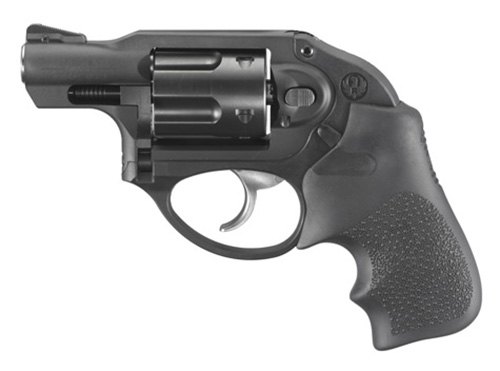
Ruger’s LCR is one of the most modern revolvers out there. A five-shot shrouded-hammer design, it combines a stainless-steel frame and cylinder with a polymer trigger group, so it weighs in at just 17 ounces. A 1.87-inch barrel keeps overall length down to six and a half inches. Ultra-low profile sights and the smallest-diameter .357 cylinder on the market improve concealability and help eliminate snags.
The LCR was designed to accept Crimson Trace Lasergrips right out of the box, and that adds up to a fantastic self-defense package – this gun has plenty of power, and the laser lets you put it on target every time. It’s also amazingly controllable, even with full-power Magnum loads.
There are six available calibers, starting with .22LR and taking in .22WMR, .38 Special +P, 9mm and .327 Federal Magnum, but the .357 is the sensible choice. It makes the biggest hole, and you can also fire .38 through it.
Smith & Wesson Airweight Centennial Model 642 (.38 Special)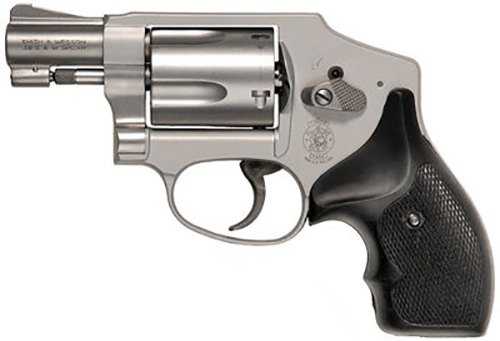
A S&W J-Frame, with a stainless two-inch barrel, shrouded hammer and lightweight aluminum frame, the 642 is rated for continuous +P use. It holds five rounds in a compact stainless-steel cylinder and comes with ergonomic rubber grips as standard. It’s just 6.3 inches long and weighs under fifteen ounces.
If .357 is a bit of a handful for you, the Model 642 is a great choice. It’s small and light, with low-profile integral sights to help avoid snags, and very controllable to fire. The 642 and its non-stainless relative, the 442, are the most popular J-Frames, and there’s a reason for that.
It’s also available with a key-operated trigger lock. This isn’t something you want to use on a carry gun, but if you have kids at home it might be worth looking at.
Smith & Wesson M&P 340 (.357 Magnum)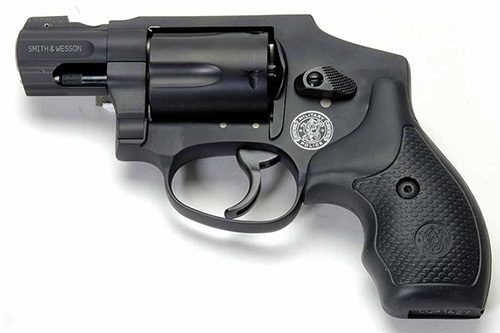
If you like the compactness and light weight of the 642, but aren’t so keen on the caliber, the Military & Police 340 is basically the same gun but chambered for .357 Magnum. It’s the same size, has the same five-round capacity and the same snag-free profile.
There is one big difference – the weight. Unloaded, the M&P tips the scales at just under 14 ounces. It manages this by having a frame cast from super-light scandium alloy, supporting a stainless barrel and cylinder.
One side-effect of the extreme low weight is ferocious recoil, but in return you get a pocket powerhouse that weighs as close to nothing as a full-bore handgun ever will. Its only real limitation is that you can’t use bullets under 120 grains – S&W say they leave the case too quickly, and burning powder can erode the frame.
Related: 23 Motives to Prep Even If Doomsday Never Arrives
Rossi R46202 (.357 Magnum)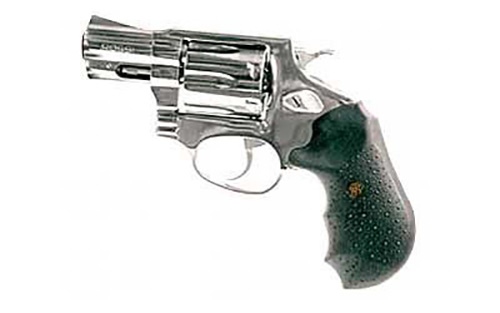
Rossi’s R46202 is a bit chunkier than the guns we’ve looked at so far – it weighs 26 ounces – but it’s still only 6.5 inches long with a two-inch barrel. It’s also not quite as snagless, thanks to its exposed hammer. On the other hand, if you’re looking for a full-bore revolver on a budget this is a good option – the recommended retail price is just $359.
Made in Brazil in the same factory as sister company Taurus, the polished stainless R46202 is a lot of gun for the money. It comes with nice rubber grips, and the integral sights are low-profile but effective. As a bonus, it has a full six-round capacity and a traditional double action lock.
Colt Cobra (.38 Special)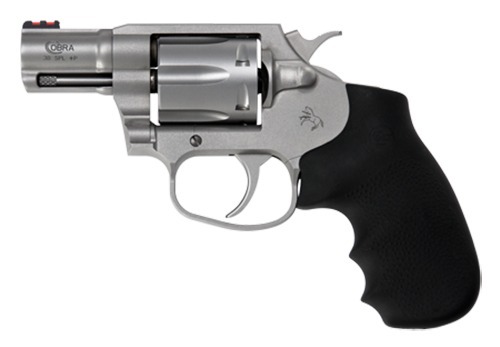
Another six-shot gun with a conventional hammer and traditional double action, Colt’s Cobra weighs 25 ounces and is 7.2 inches long over all with a two-inch barrel. That makes it slightly larger than any of the others we’ve looked at, but the upside is that it allows a more controllable grip configuration. Combined with its weight that makes it remarkably accurate for a snubby revolver, and it has decent low-profile sights to make the most of that – the rear-sight is the usual notch in the frame, while the front blade has high-visibility fiber-optic inserts. It’s rated for continuous +P use, too.
Related: Nuclear Protection Supplies You Need To Have Ready
Charter Arms Bulldog (.44 Special)
![Charter Arms Bulldog (.44 Special) [the originl charter arms bulldog]](https://www.askaprepper.com/wp-content/uploads/2017/11/Charter-Arms-Bulldog-.44-Special-the-originl-charter-arms-bulldog.jpg)
If you want a bigger bullet without growing your gun too much, the famous Charter Arms Bulldog is for you. With a 2.5 inch barrel it’s actually lighter than either the Colt or Rossi, at 21 ounces and 7.2 inches long, but packs in five rounds of .44 Special. This caliber doesn’t have the brutal recoil of .44 Magnum, but a good self-defense load (try a fast 200-grain bullet) delivers a fair amount of thump to the target and leaves a satisfyingly large hole in it.
The Bulldog has been around for a while, but it’s still one of the most concealable large-bore pistols. The frame has no sharp edges to snag, and the traditional double action mechanism has a good trigger pull in either mode.
If you want something even more concealable, Charter’s new Boomer is a Bulldog-based snubby with a two-inch ported barrel, spurless hammer and no front sight.
You may also like:
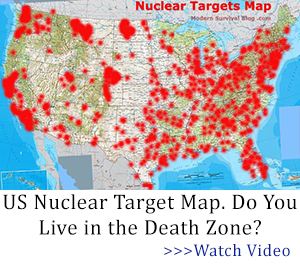 How to Conceal Weapons in Your Vehicles
How to Conceal Weapons in Your Vehicles
How to Make Your House Invisible to Looters (video)
The 6 Golden Rules of Surviving Martial Law
Potassium Permanganate: Why You Need It in Your Survival Kit

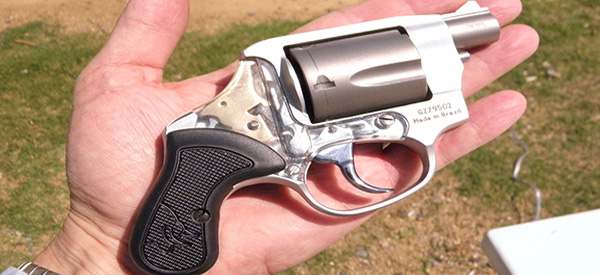













Good article with accurate descriptions of the guns suggested. There are a couple of omission of guns just recently introduced. Kimber has introduced a 6-shot snubbie. Right at this moment I cannot recall if it is .357 or .38 sp+. The Kimber, however, as a new introduction is in limited supply and I think it is somewhat more expensive than the other guns listed. It has many features that people pay extra for. Ruger is famous for its rugged guns. In the event you run out of ammo, you can use a Ruger as a club without worrying about damaging it. That company has also introduced a .44 special in their SP101 line which is a 5-shot revolver. .44 special has long been a favorite of some shootists because it fires a proven round. I favor a revolver myself, although I also have pistols. When people ask me about a revolver for home defense I suggest either the Ruger GP100 in .357 magnum with a 4 inch barrel or the S&W in stainless steel 4 inch barrel, the model that has a 7 round capacity. Either one is an excellent handgun for home defense and is durable and reliable. Each has its own strong points.
Excellent points as usual LCChuck…
I tend to carry a Kimber 1911 (master carry ultra) on a daily basis, but I do like to switch it up with a revolver now and then. My preferred revolver is the Ruger Speed Six (3″ barrel). It is slightly smaller and lighter than the GP100, but can still stand up to a regular diet of .357 Mag. Unfortunately, it is no longer in production, so the GP100 (or SP-101) would probably be the current production replacement.
I do love my Ruger wheel guns. 🙂
I used to have a Ruger Speed Six. As soon as my daughter saw it she said, “That’s mine.” As I indicated earlier, worst case it is sturdy enough to use as a club. Not the lightest compact but certainly the sturdiest. It can stand the full house .357s better than you can. Unfortunately, in my view, Ruger replaced it with the SP101. A good gun but one round shy of 6. Yes, I know, if I place my shots accurately, one should do the trick. The gun can do it, I wouldn’t bet big money on me doing what I am supposed to do.
I noticed that Taurus makes their own revolvers similar to the Ruger GP100 and SP101. Of course companies try to follow trends in design and rather than say copy each other, I will say they are often inspired by each other. Like the Smith And Wesson Sigma or the XD series by Springfield Arms. Nice alternatives to a Glock, similar, but not in any way can we call them knockoffs. I like Glock, like a lot of pistols, but not the prices.
Everytime I read an article about firearms, I see something I don’t recognize and another one I would consider owning. I just happen to like the Ruger GP100 since the day I first saw a photo of it. And it has coincidentally become popular. Yet still, I like to read about lesser known brands/models that are lacking in reputation, but are quality products with good features and sometimes cheaper.
Your right about expensive on the Kimber K6S .357. Try $897.00 SRP.
I got a deal on a Kimber 1911 Ultra carry a while back and I love it. Great gun.
Unless you are a regular mag. shooter go with the 38 Spl. I just bought a Taurus snub nose 38, and it shoots very accurate. Because of the light weight the recoil is hefty. Shoot what you can handle or you are wasting ammunition. Look at the Taurus for value and accuracy.
I own several Taurus but won’t purchase another due to very poor warranty service.
Over gunning with a magnum where one does not need the over kill nor wants the recoil of a small frame wheel gun does not make sense in my book. It take one well placed round or double tap if you have trained on what ever you chose to carry. My personal preference is the.45 for it was created for one purpose, bulky yes but less rounds shot initially means more if needed.
After several years of cc was north American 32 auto which replaced compact 1911 in 45 which replaced a j frame in 38 I have gone back to a revolver Taurus 605 on 357 do to the 38/357 thing.i know over the years Taurus has been lacking in quality control and the 85 has a bad rap but so far so good. I have mine with 180 grain buffalo bore 357 wrist snapper but love it. Never have I felt under gunned even with the 32 first shot counts and need more than five say goodbye..I carry reload strips and find it’s easier less bulky than speed loaders..You missed this one.
Every review I have read of the scandium framed S&W has said that firing .357s in it is brutal and this is from experienced shootists. My brother told me that he fired a whole cylinder full of .357 in it at a shooting expo and the guy from S&W supervising the booth said, “Congratulations. You are the first one to fire a whole cylinder full.” My brother also said his hand hurt the rest of the day. A .357 firing .38+P is about as vigorous as you want to get with that particular firearm. Most definitely would not recommend it for the distaff shooters reading this column unless you can crunch Brazil nuts in your bare hands.
My favorite wheelguns for C. C. are S&Ws. They are: Model 66 2 1/2″ .357, Model 13 3″ round butt .357, and Model 60 2″ .38 Special. My DREAM GUN would be along the lines of a 5 shot .45 Colt ala S&W 69 or Ruger GP100/SP101.
Would you settle for a .44 special in an SP101 from Ruger? They have just released that gun. If you want something a little more robust, I didn’t mention it earlier, but Ruger has a snubby Redhawk in .44 magnum with a 2 1/2 inch barrel. It is called the Ruger Alaskan. I guess I won’t be able to move to Alaska because I think that is just too much fun for me to be able to handle.
I have a Alaskan and love it. However, it would take a gorilla to carry it everyday. It is only manageable on a chest rig and worthless for concealed carry.
These are all waaay too big to carry in a pocket without it being noticed.
For a ‘pocket gun’, I carry an American Standard, stainless steel, 5-shot .22 Magnum. It is totally unnoticeable in my right front pocket. I actually carried it into a courtroom where there was no metal detector present (forgot to leave it in the car). I seriously doubt that one of these in this article wouldn’t have been noticed.
I carry a LCR in the front pocket of my jeans. it is also very comfortable inside the waistband of my dress pants and only weighs 24 oz loaded.
BS article and VERY BAD advice! It is apparent that you have never shot a 357 or a 44 on that size frame that Charter Arms Bulldog will jump out of your hand first round! Any of you buy into this crap I recommend going and shooting those guns and putting one in your pocket you will need suspenders to hold up your pants! This kind of advice can get you killed.
Bullseye, so you think all these people who carry their preferred weapon have never shot them beforehand? They like their said gun because it works for them. They have shot them many times and do carry them on their person. I’m sure many do not stick a gun in their pocket and say well I sure hope it works out if I ever have to shoot it.
Did you notice the grips in the photos, most are checkered, contoured, and/or rubber to aid control and recoil. And there are other measures to control wanted and unwanted actions.
The one good thing you started to say was to “recommend going and shooting those guns” , perhaps that would have been the better message.
To call BS and BAD advise on the entire article doesn’t speak well for your position.
None of these weapons will jump out of your hand, if you have even a slight idea of how to actually hold a pistol. I can give you some lessons if you’re struggling.
A few years back when asked what would be a good carry gun, I always would suggest a model 36 or 60 S&W. Many would question, or even laugh, at it, but what else is that small, light weight, easy to use( no safety/locks to worry about, no slide to charge, positive control of hammer, no visuals needed you can feel everything ), the short barrel makes a pretty loud bark and it won’t be easily grabbed/pried from your grip.
Today there are more choices, but I’d still choose the small .357 revolver, can be loaded down for comfort shooting but in a carry situation you won’t notice recoil.
and it fits comfortably and accessibly in pockets, purses, leg/hip holsters etc., no panic if you have a bad cartridge just pull the trigger again.
Bottom line- Use what works best for you
I second the S&W m60-9. 38 SWC or 38+P 158 SWCHP 0r Speer GD short Brl. On hunts carry with BB OutdoorsMan ammo.
Love my Kimber 1911, S&W 19 & 28. Glock 17 is S.H.T.F. Ruger Speed 6 … but all heavier.
Summertime is my SW 442 with 148 WC.
The very first pistol I bought was a S&W .357 model 681 stainless steel, love that gun! This was the first gun I carried as an armed security officer back in 1982 and it never misfired or failed me on the range.
Today, it and my Springfield 1911 .45 semi auto go with me whenever I go to the store or anywhere else in town.
32 smith and Wesson long is a pretty good round. Hornady makes a great hollow point for this ammo and is easy and cheap to reload. You get six rounds before having to put new rounds in and very steady to hold. Light weight and just a lot of fun to shoot.
….for off the grid survival or defense, why would you want a revolver?? Yeah it doesn’t jam and it’s easier to maintain, but it’s limited by it’s lack of range, sometimes caliber or stopping power and the fact that they only hold 5-6 bullets. Shotguns and rifles, in my humble opinion, are far superior for both survival, hunting and defense.
Majority of self defense is within fifteen feet so a revolver would work just fine. Type of bullet in the round of ammunition makes a big difference. Hollow point/hollow cavity are best, and a soft point will be effective as well because they mushroom and expand on impact. If the fragment it is even better. Round nose/full metal jacket will penetrate and likely go through the target leaving holes and a better chance of survival. So one or two well placed shots with a hollow point will make any perp wish they never faced the person with that revolver even if it is a smaller caliber such as 32 smith and wesson.
Yes but off grid meaning most likely in the woods, animals are your big concern. Why would you let wolves, mountain lions, coyotes or bears that close? Against humans yeah it will work fine, but not against a bear. Can you actually claim to be able to kill a grizzly within 6 shots as it’s charging you at 30mph, over uneven terrain, while you are in the verge of panic? Or maybe a pack of wolves, who’s pack will 9/10 be larger than the capacity of your revolvers, and tend to encircle prey? I can answer, no. You can’t.
Shotguns will at least cause more damage at close range than a revolver ever could. Rifles can help keep them from getting closer to begin with.
I assume from your comment, Labienus, that you have never been to a steel silhouette match where the distances are 25 meters, 50 meters, 75 meters and 100 meters. While many shooters assume a supine position and shoot with the revolver braced on their leg, many shooters shoot offhand and score quite well. It is not unusual to see chickens and pigs cleaned at 25 and 50 meters. For me, turkeys at 75 meters are the most difficult target and rams at 100 meters can be frustrating because you not only have to hit the target, you have to knock a 75 pound steel target down. Many times you will hit the target and move it but it won’t go down and so no score. I believe it was Elmer Keith who killed a deer with his .44 magnum at a measured 600 yards. While he was a noted pistolero, I do believe that was a lucky shot.
A decent rifle is a lot of weight to carry and is useless for urban areas. Sure if you are going after game, rifles are a must. But for general defense not practical. Off the grid your major defense will be against rattlers, rabid animals, and perhaps coyotes. A handgun is way quicker to sight and fire than wrestling with a 30:06
Labienus: In an EOTW situation, I will be carrying my rifle and also my revolver and also my very large knife. I will also have a snubby revolver hidden somewhere on my person as well as a folding knife in one of my pockets. I thought the thrust of the article was what kind of hide-out gun one would carry in an EOTW situation and for me, my hide-out gun would be my three inch Ruger SP101 in .357 magnum. Even with hot .357 loads it doesn’t jump out of my hand. I have made it a practice, however to only shoot two cylinder fulls at one sitting and I do wear shooting gloves when shooting it. I have learned a few lessons in the many years of being around and paying attention most of the time. As some folks are wont to say, “A pistol is for fighting your way to your rifle.”
Revolvers will fire whatever ammo you have available.
Pistols can be temperamental. Not only do you have to know your weapon you also need to know what it likes to cycle though it. One less thing to worry about with a revolver.
I used to carry a .38 Iver Johnson in the top of a pair of Wellington boots i used to wear. otherwise, it was usually my 1903 Colt .32, in a carrier made of leather , almost exactlylike that bogies plastic thing they sell now for quick draw. Winchester silvertip hollowpoints in the colt.
If you know you are going to be in harm’s way, such as an end of the world situation, going with only a single handgun is asking for trouble. Police officers on the beat more often than not have their full sized duty weapon on their duty belt and in addition have a back up gun either on a calf holster or in their back pocket as back up. It is called a New York reload. Many infantrymen also manage to scare up a back-up pistol or revolver to carry in addition to their issue rifle or other shoulder weapon.
The other advantage of revolvers are that they leave no brass to pick up. Great for reloading cuz you don’t have to look around for the brass like an auto. No brass left makes harder to trace incident.
you fail to mention the 22 magnum weapons. That round carry a pretty lethal blow. Kel tec has the PMR30 yip 30 rounds for a semi auto. Ruger LCR can be purchased in a 22 mag as well for a revolver. don’t under estimate this vicious weapon
I think the PMR30 is a highly interesting firearm. The only problem is here in the PDRK, it can’t be purchased as it is a “dangerous firearm” and hasn’t passed the safety check that the PDRK has for hand guns. Of course, KelTec probably hasn’t offered it for testing inasmuch as “dangerous assault pistols” can only hold ten rounds in the magazine here in the PDRK.
After all, no one needs more than ten rounds for self defense, right? Tell that to the cop who put 19 rounds of hollow point, 185 grain .45 acp into a bad guy last year before the bad guy finally quit shooting back at the cop. The bad guy had apparently consumed some perception altering substances and didn’t know he was dead until the cop was finally able to put one in the b.g.’s brain bucket and that short-circuited his nervous system and he fell over.
What obout other guns. Like the snake gun that uses a 4-10 shale.
To the guy that talks about shooting steel targets at distances, I have never been attacked by steel targets nor have I ever seen a steel target move. When talking about defense it usually means something is trying to kill you.
Labinius was talking about animals getting close to one, and I felt the inference from his comment was that a rifle or shotgun would keep attack animals further away than a handgun. The Elmer Keith shot that killed the deer was 600 yards as paced off by Elmer and the other men with him. I mentioned steel targets because other than Keith’s whitetail, that is the only other pistol shooting done at known distances. It’s a little trickier than just hitting the target, especially the rams at 200 meters. You can hit them and your spotter can tell you where you hit it, but you have to hit it squarely to knock it down. It doesn’t count to just hit it. You have to knock it off the rail. The ram is half inch steel and is quite heavy, so it takes a solid blow to know it off the rail. While it is true that it isn’t shooting back, it does illustrate the point that one can hit targets with a handgun at 200 meters accurately. I may not hit you in the brain bucket at 200 meters but I sure will be close enough to make you want to take cover.
Hmm not a single .22 pistol in the bunch.
Lightweight and can be lethal is used properly.
Cheap ammo too.
When I took my concealed weapon class to get my license, the instructor was upset with me for using a revolver and not an automatic like everyone else in the class. When it came to shooting, I nailed it better than others and I think much to the instructors surprise.
Charter Arms Bulldog now comes in .45 Long Colt, a much easier acquired round than 44 Special